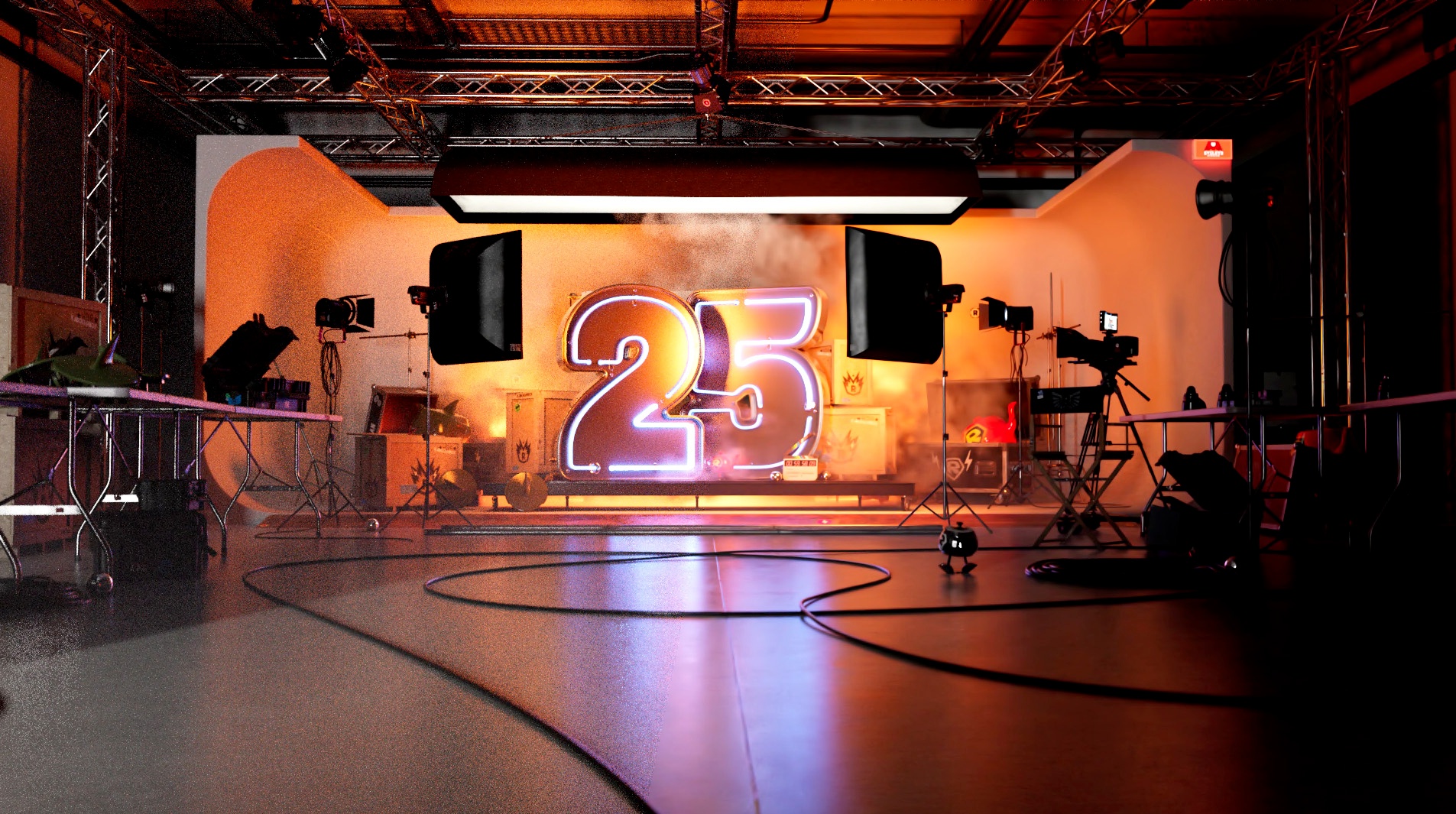Basic Setup in Katana
See the denoise_teapots.katana example file in RfK's Examples directory to see how to set up denoising. Setup:Step 1:
Create Add a PrmanDenoiseChannelDefine node which is a macro for creating to create all the specific DisplayChannels required for the denoise utilitydenoiser.
Step 2:
Create Add a PrmanDenoiseRenderOutputDefine node which is a macro for rendering a to output a multichannel OpenEXR file for the beauty pass combined with the AOVs.You can command-click to see inside these macros and change settings if necessary. On the RenderOutputDefine node, make sure asrgba is set off, and that the type is set to raw to avoid any post-processing. The file contains all the required denoise channels.
Set the renderLocation parameter to the location of your output image. The denoiser expects images to be in the form <NAME>.<FRAME_NUMBER>.exr (ex. image.1001.exr). In Katana you can specify the number of digits in the frame number by the number of #s in the filename (ex. image.##.exr would result in image.01.exr).
Step 3:
Set pixelfiltermode to importance if you changed it from the default. This is done in PrmanGlobalStatements.
Custom setup in Katana
Both the PrmanDenoiseChannelDefine and PrmanDenoiseRenderOutputDefine nodes are macros. You can command-click to see inside these macros and change settings if necessary.
If your pipeline does not support multichannel EXREXRs, you can use separate RenderOutputDefine nodes to create an output for each channel defined in PrmanDenoiseChannelDefine. Then use $RMANTREE/bin/exrmerge to combine the AOVs into a multichannel EXR.
Then use Use this merged multichannel EXR for the denoise utility.
Note that each AOV's denoiser. Combined EXRs created with Katana's RenderOutputDefine merge will not work with the denoiser.
On any RenderOutputDefine nodes you create for denoising, the type should be set to "raw" because this preserves the channel name in the EXR which the denoise utility will look for. Combined EXR using Katana's RenderOutputDefine's merge will not work with the denoise utility.
Running the denoiser:
to avoid any post-processing by Katana. Then make sure asrgba is set off so that the channel names align with what the denoiser expects.
| Info |
|---|
| See the denoise_teapots.katana example file in RfK's Examples directory to see how to set up denoising. |
...
Running the Denoiser:
There are several options available to denoise your Katana renders. RenderMan provides both a command line denoise tool called denoise_batch and a Denoise UI. Note that denoising is not supported interactively, so all denoise renders need to be Disk or batch renders.
Option 1:
...
RenderOutputDefine Script (Single Frame)
Create a
...
RenderOutputDefine.
Wire this node to the previous RenderOutputDefine node.
...
Select script for the type, select primary for the scriptInput, and set the scriptCommand to the following:
$RMANTREE/bin/denoise_batch -o /path/to/directory/for/denoised/images $INPUT |
...
Finally, render your scene with a disk or batch render.
Option 2: command line (Crossframe or Single Frame)
Render out your images with katana --batch or katana queue. Then run the following
...
command:
$RMANTREE/bin/denoise_batch -o /path/to/directory/for/denoised/images imagename.*.exr |
...
See the Denoiser Command Line documentation for more information on the settings available.
Option 3: Denoise UI (Crossframe or Single Frame)
- Render your images out of Katana as a disk or batch render.
- The PRMan 25 shelf has a script called RenderMan Denoiser. You can open this to select and denoise images that you have already rendered out
...
| title | Note: |
|---|
...
- Run this script to launch the Denoise UI. You can also access the UI directly from
$RMANTREE/bin/denoise - In the UI, select "Add Directory..." and choose the directory containing the images you have rendered out of Katana.
- Next select folder icon next to choose the directory your denoised images will be saved in.
- Hit "start" to begin denoising.
See the Denoiser UI documentation for more information on the settings available.
...

